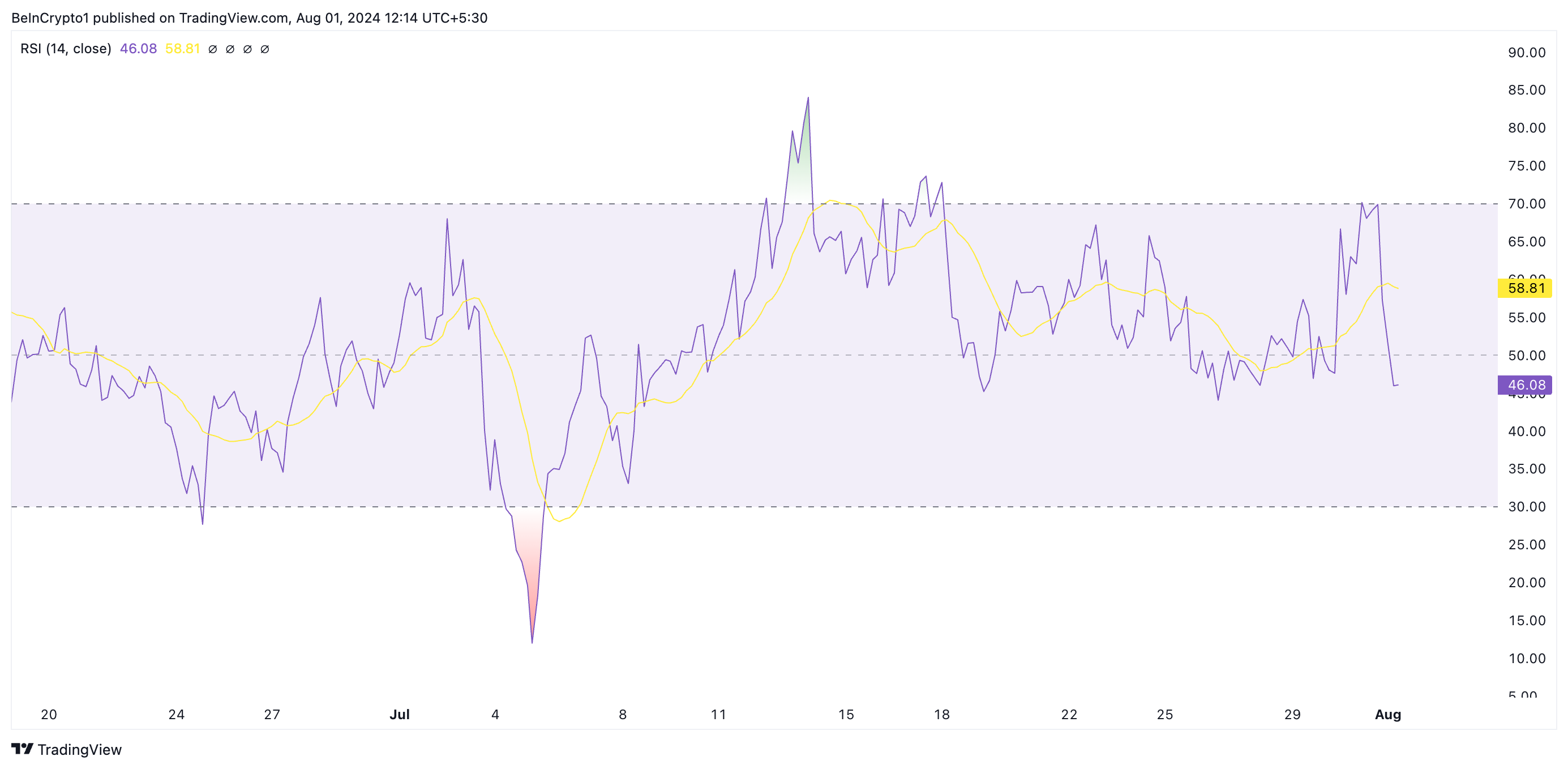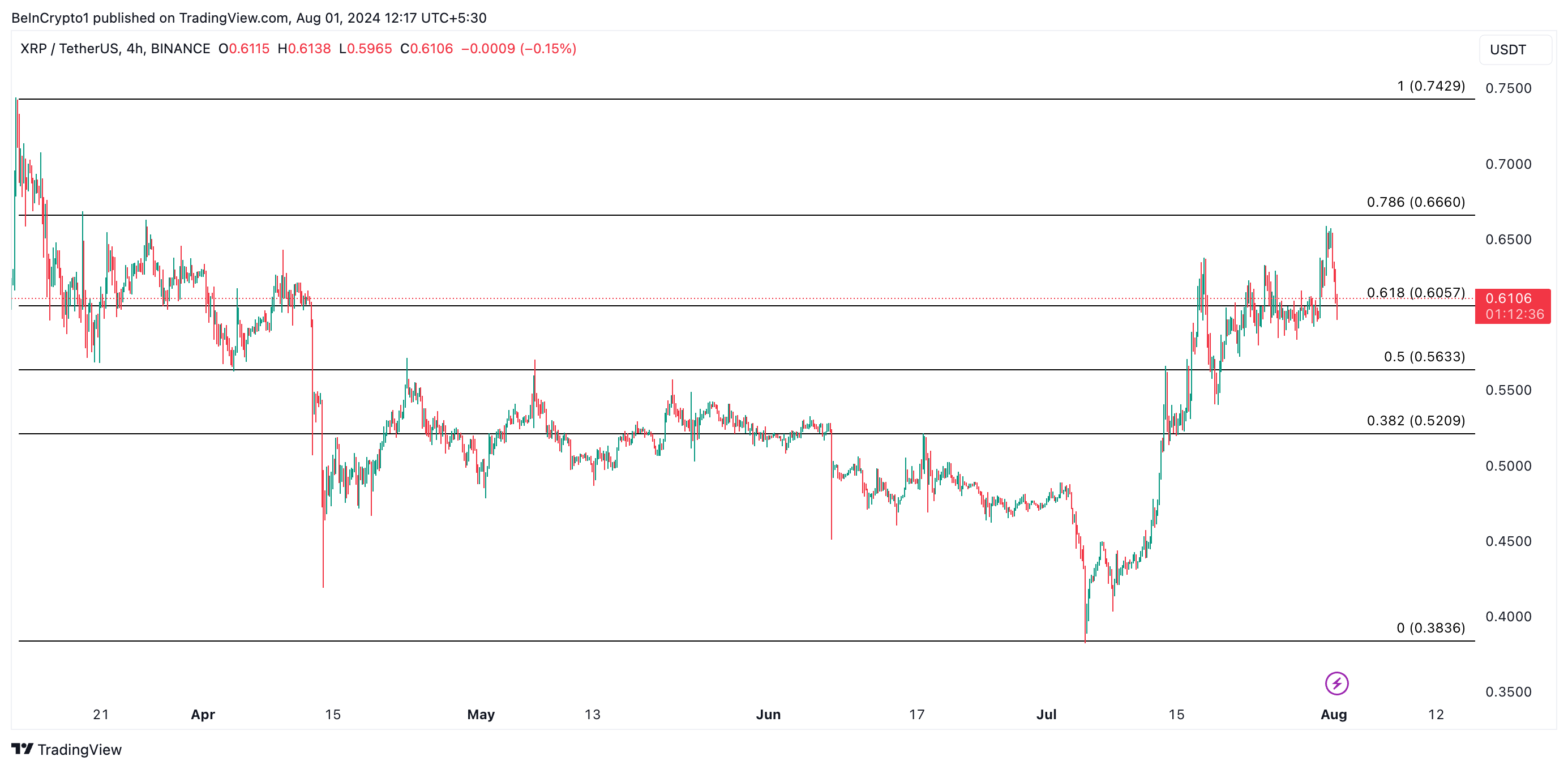Markets
In volatile cryptocurrency markets, can stablecoins live up to the promise implicit in their name?

The cryptocurrency market has long been characterized by extreme volatility, as demonstrated again recently by the significant price fluctuations of Bitcoin. While this volatility has been a persistent feature since the inception of Bitcoin, the recent massive price movements are a stark reminder of the volatility and risks associated with all unsupported cryptocurrencies.
Stablecoins were first introduced in 2014 in response to this inherent instability in the cryptocurrency market. Developed as a trading pair for cryptocurrencies like Bitcoin, the primary goal of stablecoins was to address price fluctuations, which some believed made cryptocurrencies less suitable for day-to-day transactions and less viable as a store of value.
Stablecoins aim to solve this perceived problem by offering the benefits of digital currencies, such as fast, borderless transactions, while maintaining a constant value, usually pegged to a fiat currency such as the U.S. dollar.
By the end of 2023, the stablecoin market had grown to a substantial size, albeit with some significant ups and downs along the way. Today, the total stablecoin market cap stands at around $120 billion, well below its peak of over $180 billion in 2022. This decline can be attributed to a combination of shifting investor sentiment, challenging cryptocurrency market conditions, and attractive returns offered by traditional equity and income markets.
However, despite the decline, stablecoins still represent a significant portion of the overall cryptocurrency base, accounting for approximately 6.5 percent of the total cryptocurrency market cap. Tether (USDT), the largest stablecoin, accounts for over $80 billion of this total, followed by USD Coin (USDC) at approximately $26 billion. While these figures pale in comparison to the market caps of Bitcoin and Ethereum, they are still significant indicators of the importance of stablecoins in the cryptocurrency ecosystem.
Stablecoins aim to offer a more stable digital currency option than traditional cryptocurrencies, employing various mechanisms tailored to each type. The three main types are fiat-backed stablecoins, crypto-backed stablecoins, and algorithmic stablecoins.
While it is often assumed that fiat-backed stablecoins are entirely backed by traditional fiat currencies, they are actually backed by reserves that consist largely of U.S. Treasuries and short-term debt. This introduces specific risks such as interest rate risk, where changes in interest rates can affect the value of these securities, and liquidity risk, which can be problematic if there is a need to quickly convert these securities into cash.
Stablecoins with cryptocurrency collateral leverage other cryptocurrencies as collateral, introducing a different set of risks related to the volatility of cryptocurrency markets. And algorithmic stablecoins use smart contracts to adjust supply based on demand. This can lead to vulnerabilities in the underlying algorithm, while unexpected large-scale economic changes could also destabilize the coin’s value. While each type of stablecoin has its strengths and weaknesses, they all share the common goal of providing a more stable alternative to traditional cryptocurrencies.
Initially, the stablecoin market saw significant growth as investors and traders sought refuge from cryptocurrency volatility. However, this growth was not without its challenges.
The collapse of Terra, an algorithmic stablecoin, sent shockwaves through the cryptocurrency world in May 2022. Despite not being a true stablecoin in the traditional sense, Terra’s failure severely dented confidence in the broader stablecoin market, leading to a period of decline and increased scrutiny.
Terra’s collapse was a reminder that the reality of stablecoins is more complex than their name suggests. While they have proven useful as a means of facilitating cryptocurrency trading and cross-border payments, they face several challenges as a widespread payment method. Issues such as scalability, transaction speed, and costs still need to be addressed for stablecoins to compete with traditional payment systems.
The risk of de-pegging, where the value of a stablecoin diverges from the currency or other asset to which it is linked, has also been a concern, as evidenced by the fluctuations that still occur even in the largest stablecoins. To address this issue, stablecoins such as Terra and FDUSD have implemented specific mechanisms to manage and report their collateral more effectively.
Terra uses a dual-token system, balancing TerraUSD with LUNA to absorb volatility and maintain stability through automatic supply adjustments. FDUSD maintains reserves at a specific threshold, using real-time monitoring and transparent reporting. These strategies aim to mitigate de-pegging risks and improve the stability and reliability of stablecoins.
Photo credit: Binance
Despite this risk of de-pegging, stablecoins offer a number of advantages, particularly in developing economies. In Africa, for example, they have attracted particular interest due to the continent’s unique and challenging financial landscape. With a large unbanked population and currency instability issues in many countries, stablecoins offer the potential to address the need for financial inclusion and can serve as a useful hedge against inflation.
Countries such as Nigeria, Kenya, and South Africa are leading the way in adopting stablecoins in Africa, driven by factors such as the need for remittances, limited access to formal financial services, and the growing popularity of cryptocurrencies.
As the stablecoin market continues to evolve globally, there is growing recognition of the need for clearer regulatory frameworks. Regulatory ambiguity remains a significant obstacle to investor confidence and broader adoption. Debates continue in the United States and other major economies over how to classify and supervise stablecoins. Resolving these challenges will be critical to the long-term viability and growth of the stablecoin market.
In Africa, regulatory responses vary across the continent, with some countries taking a more cautious approach while others are more open to innovation. Kenya is considering regulations to prevent illicit activity, while South Africa is expected to have comprehensive regulations in place for tokenized deposits and cryptocurrencies by 2025. Companies like Binance are actively engaged in discussions with regulators to promote safe and efficient crypto markets.
Looking ahead, stablecoins are likely to continue to play an important role in shaping the digital economy, both globally and in Africa. Recent stablecoin initiatives by major financial service providers such as PayPal and Visa demonstrate growing institutional interest in this form of crypto-pegged stablecoin.
However, the overall payments landscape is also evolving, as evidenced by the development of central bank digital currencies (CBDCs) and tokenized bank deposits, which could offer alternatives to privately issued stablecoins and hinder their path to wider adoption.
That said, as the cryptocurrency market matures and regulatory frameworks continue to evolve, stablecoins could prove to be a valuable bridge between traditional finance and the cryptocurrency world.
However, their long-term success will still depend on their ability to deliver on the promise implicit in their name, which is ultimately to provide the stability that many cryptocurrency investors and users desire.
Did you know: Binance celebrates its seventh anniversary this month, supporting over 210 million users worldwide. Binance’s primary focus remains on users, innovation, and a hardcore work culture. Its robust infrastructure supports 541 digital assets and 2,632 trading pairs, seamlessly handling high user activity. Read our thoughts CEO here: Seven years at the frontier of financial innovation.
Hannes Wessels is the Managing Director of Binance South Africa
Markets
Bitcoin, Ethereum See Red as Markets Crash on Volatility

Bitcoin AND Etherealalong with the rest of the top 10 cryptocurrencies by market cap, appear to be in hibernation on Thursday morning.
At the time of writing, the Bitcoin Price is still below $65,000 and 2.2% lower than it was this time yesterday, according to CoinGecko data. Things are worse for the Ethereum Pricewhich is 3.7% lower than 24 hours ago at $3,185.22. The drop in ETH’s price is identical to that of Lido Staked Ethereum (stETH), a liquid staking token for Ethereum.
In recent days, falling prices have led to the liquidation of derivative contracts worth $225 million, according to Coin glassAnd about half of that, about $100 million, was liquidated in the last 12 hours.
When a trader is liquidated, it means that their position in the market has been forcibly closed by an exchange or brokerage due to a margin call or insufficient collateral. Margin is especially important when it comes to leveraged positions, which allow traders to control a multiple of their deposit, such as opening a $10,000 position with only $1,000 in their account.
Now that Bitcoin has been in the red for three days in a row, there is a chance that the world’s oldest and largest cryptocurrency could sink even further, BRN analyst Valentin Fournier said in a note shared with Decrypt.
“Bitcoin has closed in the red for three days in a row, with one-way trading showing limited resistance from bulls. Ethereum had a slightly positive Monday with strong resistance from bears who have won the last two days,” he wrote. “This momentum could take BTC to the $62,500 resistance or even the $58,000 territories.”
Looking ahead, Fournier said BRN’s strategy will be to “reduce exposure to Bitcoin and Ethereum and find a better entry point after the dip.”
This is despite Federal Reserve Chairman Jerome Powell’s comments yesterday on interest rates being widely regarded as accommodating and indicative of FOMC rate cuts in September.
Singapore-based cryptocurrency trading firm QCP Capital said the rally in stocks, which sent the S&P 500 up 1.6% from Wednesday’s close, was not felt in cryptocurrency markets.
“Cryptocurrencies have seen a broad sell-off overnight and into this morning,” the firm wrote in a trading note. “The market remains poised as traders pay close attention to daily ETH ETF outflows and further supply pressure from Mt Gox and the US government.”
Meanwhile, the other top-ranking coins are showing mixed performance.
Solana (SOL) is down 7.2% since yesterday to $169.13. Things are even worse for its most popular meme coins. In the past 24 hours, the most popular meme coins Dogwifhat (WIF) are down 12% and BONK (BONK) is down 9%, according to CoinGecko data.
Their dog-themed competitor, Ethereum OG Dogecoin (DOGE), the only meme coin in Coingecko’s top 10, is down nearly 4% since yesterday and is currently trading at $0.1205.
XRP (XRP) dropped to $0.608, which is 7% lower than it was at this time yesterday.
Binance’s BNB Coin (BNB) has kept pace with BTC and is currently trading at $571, down 2.4% from yesterday. Toncoin (TON), the native token of The Open Network, is down just 0.4% over the past day.
This leaves the stablecoins USDC (USDC) and Tether (USDT), both of which are stable as they maintain their 1:1 ratio with the US dollar.
Markets
XRP Market Activity Drops During Ripple-SEC Talks: Price Steady

The Securities and Exchange Commission (SEC) will hold another closed-door meeting with Ripple on Thursday, as the market hopes for a possible resolution to the legal battle between the two entities.
However, the cryptocurrency market remains relatively bearish, with the price and trading volume of XRP down in the last 24 hours.
Ripple holders take no risk
At press time, XRP is trading at $0.60. The altcoin’s price has dropped 6% over the past 24 hours. During that time, trading volume was $27 million, down 27%.
The SEC met before with the digital payment company on July 25. While the outcome of that meeting remains unknown, the Sunshine Act Notice for Thursday’s meeting includes one additional topic of discussion from the July 25 closed meeting: the instituting and resolving injunctive relief. That has market participants speculating whether a settlement is imminent.
In an exclusive interview with BeinCrypto, Ryan Lee, Lead Analyst at Bitget Research, noted that:
“This meeting will discuss possible resolution options for the Ripple Lawsuit. The founder of Ripple Labs said that a legal settlement could be announced soon. If an official settlement plan is released, it could positively impact XRP’s price movement.”
However, an assessment of XRP’s price movements on a 4-hour chart shows a spike in bearish bias as the market awaits the outcome of this crucial meeting. Its Moving Average Convergence/Divergence (MACD) indicator readings show that its MACD line (blue) has crossed below its signal line (orange).
XRP 4 Hours Analysis. Source: Trading View
Traders use this indicator to gauge price trends, momentum, and potential buying and selling opportunities in the market. When an asset’s MACD is set this way, it is a bearish signal that suggests selling activity is outweighing buying momentum.
Additionally, the altcoin relative strength index (RSI), at 46.08, is currently below its neutral 50 line and in a downtrend. This indicator measures overbought and oversold market conditions for an asset.
To know more: How to Buy XRP and Everything You Need to Know
 XRP 4 Hours Analysis. Source: Trading View
XRP 4 Hours Analysis. Source: Trading View
At 43.83 at the time of writing, XRP’s RSI suggests a growing preference among the market participants for tokin distribution.
XRP Price Prediction: Derivatives Traders Exit Market
The XRP derivatives market has also seen a decline in trading activity over the past 24 hours. According to Coinglass, derivatives trading volume has plummeted 18% and open interest has dropped 10% during that period.
Open interest refers to the total number of outstanding derivative contracts, such as options or futurethat have not yet been resolved. When it drops, traders close their positions without opening new ones. This is a bearish signal that reflects a lack of confidence in any potential positive price movement.
According to Lee, the outcome of the meeting with the SEC “would have a significant impact on the price movement of the token.” If the outcome is favorable, the price of the token could rise towards $0.75 in August.
To know more: Ripple (XRP) Price Prediction 2024/2025/2030
 XRP 4 Hours Analysis. Source: Trading View
XRP 4 Hours Analysis. Source: Trading View
On the other hand, if no favorable resolutions are reached, the price could plummet to $0.50.
Disclaimer
In line with the Trust Project guidelines, this price analysis article is for informational purposes only and should not be considered financial or investment advice. BeInCrypto strives to provide accurate and unbiased reporting, but market conditions are subject to change without notice. Always conduct your own research and consult a professional before making any financial decisions. Please note that our Terms and conditions, Privacy PolicyAND Disclaimers They have been updated.
Markets
Bitcoin’s Dominance Hits Three-Year High, But Analysts Say Altcoins Are Ready to Rebound

Bitcoin is now the dominant force in the cryptocurrency market, surpassing 53% of the total cryptocurrency market, a stronger share than it has been in the past three years.
Bitcoin’s market cap now stands at $1.27 trillion, second according to CoinGecko data. In contrast, the total cryptocurrency market cap is $2.43 trillion, with Ethereum occupying 15.9% of the market, worth $389 billion.
Bitcoin’s rise to dominance this year is unusual, as altcoins typically do better than Bitcoin in a bull market. While meme coins made a strong comeback during Bitcoin’s rally to all-time highs earlier this year, the so-called “wealth effect” It has not been appreciated as much by mid-range coins, such as Ethereum and Cardano.
“ETF flows fundamentally alter market dynamics,” he wrote Meltem Demirors, former chief strategy officer at CoinShares, tweeted Wednesday: “BTC gains no longer translate to alts and the longer tail of crypto.”
Bitcoin’s takeover has continued even as the market cap of Tether (USDT) continues to grow, the world’s largest stablecoin and the third-largest cryptocurrency after BTC and ETH. Stablecoins are backed by fiat currencies and are excluded from some measures of Bitcoin dominance due to fundamentally different value models.
The surge continued to pace even after the launch of Ethereum spot ETFs last week, which ironically culminated in a news sell-off event, and net outflows from new investment products since they were launched. This went against the predictions of K33 Search so far, which predicted that ETFs would catalyze ETH’s growth over the next five months.
Despite the poorer performance of the alts, there is reason to believe that they are ready to bounce back very soon.
CryptoQuant CEO Ki Young Ju said Tuesday that whales are “preparing for the next altcoin rally,” as limit buy orders for assets other than BTC and ETH are on the rise.
The executive shared a chart showing how the “cumulative difference between purchase volume and sales volume” has increased in recent months.
“The indicator measures the difference between buy and sell orders over a year,” CryptoQuant told Decrypt. A buy/sell order is a pre-set request to buy or sell a cryptocurrency if it hits a certain price level, which creates resistance and support levels.
“If the trend is up, it means that more people are placing buy orders, showing strong interest in buying,” CryptoQuant said.
By Ryan-Ozawa.
Markets
XRP and SOL Retrace as BTC Price Drops to 2-Week Lows (Market Watch)

After Monday’s crash, in which BTC fell by several thousand dollars, the scenario has repeated itself once again in the last 12 hours, with the asset falling to a 2-week low of $63,300.
Alt coins followed suit, with most of the market in the red today. SOL and XRP lead the way from the higher cap alts.
BTC Drops To $63.3K
After a violent Thursday last week, when BTC crashed to $63,400, the asset went on the offensive over the weekend and surged above $69,000 on Saturday, as the community prepared for Donald Trump’s appearance at the 2024 Bitcoin Conference in Nashville.
His speech was followed by more volatility before the cryptocurrency settled around $67,500 on Sunday. Monday started off rather optimistically for the bulls as bitcoin hit a 7-week high of $70,000.
However, he failed to maintain his run and conquer that level decisively. On the contrary, he was rejected bad and dropped to $66,400 by the end of Monday. Tuesday and Wednesday were less eventful as BTC remained still around $66,500.
The last 12 hours or so have brought another crash. Bears have pushed the leading digital asset down hard, which has fallen to a 2-week low of $63,300 (on Bitstamp), leaving over $200 million in liquidations.
Despite the current rebound to $64,500, BTC’s market cap has fallen to $1.270 trillion, but its dominance over alts is recovering and has reached 52.6%.
Bitcoin/Price/Chart 01.08.2024. Source: TradingView
The Alts are back in red
Ripple’s native token has been at the forefront of the market challenge in recent days as pumped up to a multi-month high of over $0.66. However, its run was also interrupted and XPR fell by more than 6% in the last day to $0.6.
The other big loser among the larger-cap alternatives is SOL, which has lost 8% of its value and is now struggling to get below $170.
The rest of this altcoin cohort is also in the red, with ETH, DOGE, BNB, AVAX, ADA, SHIB, and LINK all seeing drops between 2 and 5%.
The total cryptocurrency market cap lost another $70 billion overnight, falling below $2.4 trillion today on CG.
Cryptocurrency Market Overview. Source: QuantifyCrypto SPECIAL OFFER (sponsored)
Binance $600 Free (CryptoPotato Exclusive): Use this link to register a new account and receive an exclusive $600 welcome offer on Binance (full details).
LIMITED OFFER 2024 on BYDFi Exchange: Up to $2,888 Welcome Reward, use this link to register and open a 100 USDT-M position for free!
Disclaimer: The information found on CryptoPotato is that of the authors cited. It does not represent CryptoPotato’s views on the advisability of buying, selling, or holding any investment. We recommend that you conduct your own research before making any investment decisions. Use the information provided at your own risk. See Disclaimer for more information.
Cryptocurrency Charts by TradingView.
-

 News1 year ago
News1 year agoBitcoin soars above $63,000 as money flows into new US investment products
-

 DeFi1 year ago
DeFi1 year agoEthena downplays danger of letting traders use USDe to back risky bets – DL News
-

 News1 year ago
News1 year agoFRA Strengthens Cryptocurrency Practice with New Director Thomas Hyun
-

 DeFi1 year ago
DeFi1 year agoZodialtd.com to revolutionize derivatives trading with WEB3 technology
-

 Markets1 year ago
Markets1 year agoBitcoin Fails to Recover from Dovish FOMC Meeting: Why?
-

 DeFi1 year ago
DeFi1 year ago👀 Lido prepares its response to the recovery boom
-

 Markets1 year ago
Markets1 year agoWhale Investments in Bitcoin Reached $100 Billion in 2024, Fueling Crazy Investor Optimism ⋆ ZyCrypto
-

 Markets1 year ago
Markets1 year agoWhy Bitcoin’s price of $100,000 could be closer than ever ⋆ ZyCrypto
-

 DeFi1 year ago
DeFi1 year agoPancakeSwap integrates Zyfi for transparent, gas-free DeFi
-

 Markets1 year ago
Markets1 year agoWhales are targeting these altcoins to make major gains during the bull market 🐋💸
-

 DeFi1 year ago
DeFi1 year ago🏴☠️ Pump.Fun operated by Insider Exploit
-

 News1 year ago
News1 year agoHow to make $1 million with crypto in just 1 year 💸📈





